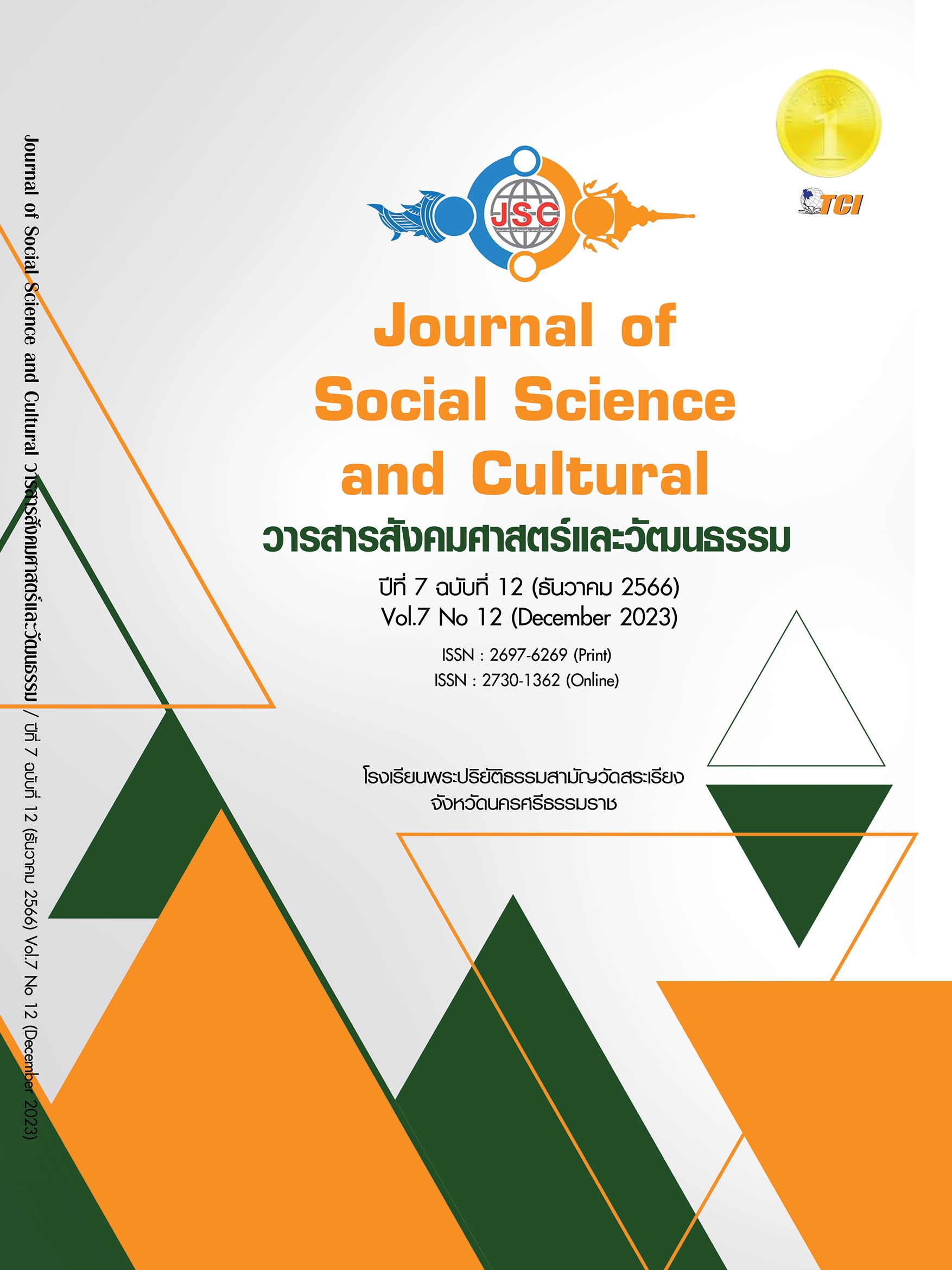DEVELOPMENT OF LEGAL LEARNING MANAGEMENT INFORMATION SYSTEMS FOR PRODUCERS OF PROCESSED AGRICULTURAL PRODUCTS IN NAKHON SI THAMMARAT PROVINCE
Main Article Content
Abstract
The objectives of this research were 1) to develop a legal learning management information system for producers of processed agricultural products in Nakhon Si Thammarat Province. 2) to assess the satisfaction of users of the legal learning management information system of producers of processed agricultural products. This research is research and development. The sample group in this research is 30 entrepreneurs of processed products according to the identity of Khao Pa Na Le, Nakhon Si Thammarat Province, selected using purposive sampling. The research tools are Legal learning management information system and user satisfaction questionnaire and the statistics used for data analysis are mean and standard deviation. The results of the research found that 1) developing the system SDLC (System Development Life Cycle) system development principles are used, starting from gathering information and user needs, analyzing data and needs, designing, and developing information systems, validation and testing the accuracy of system and evaluation of information systems. Development of a legal learning management information system for producers of processed agricultural products. The researcher developed it as a web application using the languages ASP.NET, CSS, HTML, JavaScript, and used Visual Studio as a system development tool. The system developed by the researcher is designed to have a responsive display that results on screens of various sizes. Users of the information system can access or search legal information related to producers of processed agricultural products on their phones, tablets, and computers. 2) satisfaction with the legal learning management information system of processed agricultural product producers from a sample of users of the system was at a highest level with a mean of 4.58 and a standard deviation of 0.48. In conclusion, the information system developed according to the objectives is effective and satisfactory to the users.
Article Details
References
ขนิษฐา อินทะแสง และสุวัฒน์ บรรลือ. (2564). คลังข้อมูลศิลปวัฒนธรรมเพื่อส่งเสริมการท่องเที่ยวเชิงอนุรักษ์ในจังหวัดอุบลราชธานี. วารสารเทคโนโลยีอุตสาหกรรม มหาวิทยาลัยราชภัฏอุบลราชธานี, 11(2), 27-40.
จิรันธนิน ทองธิราช และปฐวี ประทา. (2566). การพัฒนาระบบสารสนเทศบัญชีเงินเดือนของบุคลากรมหาวิทยาลัยราชภัฏอุดรธานี. วารสารการบริหารนิติบุคคลและนวัตกรรมท้องถิ่น, 9(8), 1132-1147.
ชวิน คำบุญเรือง และพรชัย เลื่อนฉวี. (2562). ปัญหาการบังคับใช้กฎหมายเพื่อการส่งเสริมสนับสนุนและพัฒนากระบวนการจัดสวัสดิการสังคมที่จัดทำโดยชุมชนในระบบสังคมสวัสดิการของประเทศไทย. วารสารมหาจุฬานาครทรรศน์, 6(10), 5143-5162.
ประจักษ์ พรมงาม. (2566). การพัฒนาระบบสารสนเทศในกระบวนการผลิตมะม่วงน้ำดอกไม้สีทองเพื่อการส่งออก กรณีศึกษาอำเภอปากช่องจังหวัดนครราชสีมา. วารสารนวัตกรรมการเรียนรู้และการศึกษาทั่วไป, 1(1), 8-20.
ภานุวัฒน์ ขันจา. (2565). การพัฒนาระบบสารสนเทศงานวิจัยเชิงพื้นที่สำหรับเครือข่ายมหาวิทยาลัยราชภัฏ. วารสารเทคโนโลยีสารสนเทศ, 18(1), 64-74.
วรรณรัตน์ การุณยวนิช และปราโมช ธรรมกรณ์. (2566). กฎหมายบริษัทที่ผู้ประกอบการยุคใหม่ควรรู้. วารสารพัฒนา ธุรกิจและอุตสาหกรรม, 3(2), 96-107.
สุรชัย อุฬารวงศ์. (2561). การจัดการเรียนรู้ด้านกฎหมายที่เกี่ยวข้องกับชุมชนในเขตเทศบาลตำบลบ้านดู่ อำเภอเมือง จังหวัดเชียงราย. วารสารมหาวิทยาลัยพายัพ, 24(1), 1–17.
Gurung, G. et al. (2020). Software Development Life Cycle Models-A Comparative Study. International Journal of Scientific Research in Computer Science, Engineering and Information Technology, 6(4), 30-37.
Koc, H. et al. (2021). UML diagrams in software engineering research: a systematic literature review. In Proceedings, 74(1), 13.
Leau, Y. B. et al. (2012). Software development life cycle AGILE vs traditional approaches. In International Conference on Information and Network Technology, 37(1), 162-167.
Likert, R. (1970). New Patterns of Management. New York: McGraw-Hill.
Ozkaya, M. & Erata, F. (2020). A survey on the practical use of UML for different software architecture viewpoints. Information and Software Technology, 121(4), 106275.
Yamashita, T. (2022). Analyzing Likert scale surveys with Rasch models. Research Methods in Applied Linguistics, 1(3), 100022.


